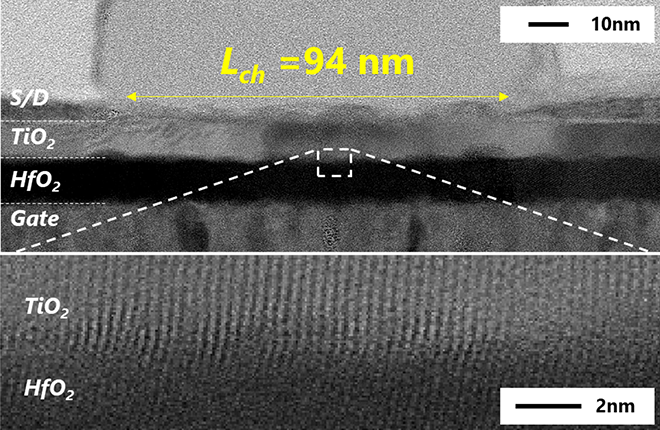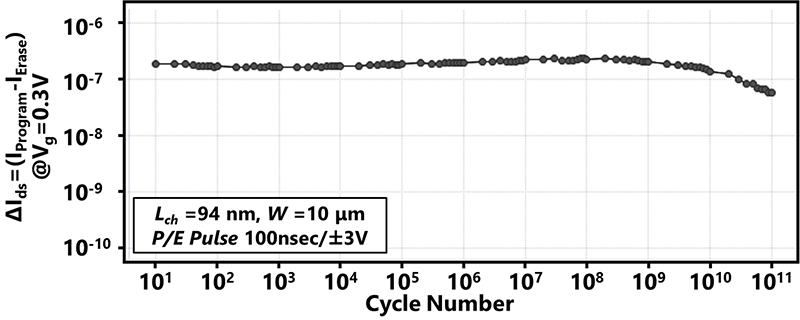Please select your location and preferred language where available.
TiO2 Channel Ferroelectric FET towards High-Performance and Low-Power AI Applications
May 31, 2023
With remarkable progress of machine learning and AI (Artificial Intelligence), the demand for high performance and low power consumption memory chips is accelerating. Hafnium dioxide (HfO2) based ferroelectric field effect transistors (FeFETs) have attracted attention as a promising candidate because of their high-speed, low-voltage operation and high compatibility with the CMOS processes[1].
Si has been commonly used as the channel material for FeFETs. One of the challenges of Si-FeFETs is the formation of a low-k interface layer at the channel/ferroelectric film interface. In particular, the degradation of this interfacial layer due to repeated write/erase operations limits the write endurance, which is one of the factors hindering the application of Si-FeFETs[2].
Recently, FeFETs using oxide semiconductors (OS) as the channel (OS-FeFETs) have been proposed to solve this issue, and since the channel of OS-FeFETs is an oxide, the low-k interface layer, which is an issue in conventional Si-FeFETs, is not formed. The OS-FeFET is expected to significantly improve the endurance characteristics. So far, many compounds containing indium oxide have been reported as channel materials for OS-FeFETs. However, OS-FeFETs using indium oxide-containing materials as the channel sacrifice the advantages of FeFETs, such as compatibility with the CMOS process and thermal tolerance in the fabrication process, and new channel materials are required to solve these problems.
In this study, we focused on titanium dioxide (TiO2). Titanium dioxide is a common material in CMOS processes, yet it is a promising oxide semiconductor channel material with high field-effect mobility and thermal stability. We fabricated the world's first short-channel TiO2-FeFET. Channel length was scaled down to less than 100 nm (Fig.1). We demonstrated program/erase operation under high-speed and low-voltage conditions (100 ns/3 V) (Fig.2). In addition, the TiO2-FeFET achieved a high endurance of more than 1011 cycles (Fig.3). These results indicate that TiO2-FeFETs are promising as high-speed, low-power, and high-endurance memory devices, and it’s a major advance toward high-performance memory chips for machine learning and AI.



This article is reconstructed from an excerpt of reference[3] presented at the 7th IEEE Electron Devices Technology and Manufacturing (EDTM) Conference held in March 2023. The paper received the Best Contributed Paper Award.
Reference
[1] Technology topics “HfO₂-based Ferroelectric-Memory towards Low-Power and High-Density AI Applications”, February 25, 2021
[2] Technology topics “Accurate Picture of Cycling Degradation in HfO2-FeFET Based on Charge Trapping dynamics Revealed by Fast Charge Centroid Analysis”, February 24, 2022
[3] Taro Shiokawa, Reika Ichihara, Takamasa Hamai, Kiwamu Sakuma, Kota Takahashi, Kazuhiro Matsuo and Masumi Saitoh, “High-Endurance (>1011cycles) and Thermally-Stable Sub-100nm TiO2 Channel FeFET for Low-Power Memory Centric 3D-LSI Applications,” 7th IEEE Electron Devices Technology and Manufacturing (EDTM) Conference, pp.334-336 (2023).

